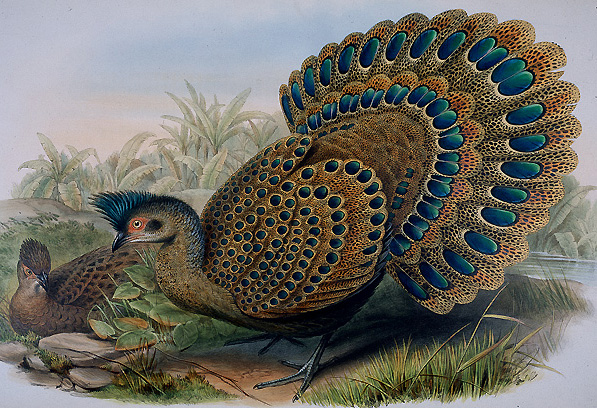 Malayan
Peacock-pheasant
Malayan
Peacock-pheasantPolyplectron malacense (Scopoli)
 Malayan
Peacock-pheasant
Malayan
Peacock-pheasantIn their natural habitat, these birds are found in the Malay Peninsula, sea level to 3,000 feet (Sibley 1990).
Known as either the Malayan Peacock-pheasant or the Crested Peacock-pheasant, this is a relatively rare bird that usually stays well hidden in densely forested lowlands and foothills. In 1937 Beebe wrote that "it is guarded so well by a myriad of tropical terrors which rise at every foot and dispute one's advance into its realm that, until the last mile of swamp is drained and the last valley cleared of the underbrush, these birds will exist." The terrors Beebe referred to were legions of leeches, sand-flies, mosquitoes, and numerous other blood-seeking parasites, not to mention the jungle terrain and its perils.
According to Delacour (1951), after the first specimen reached Europe around 1870, these birds were imported only occasionally. They were bred in France in 1884, 1885 and 1886, but subsequent pairings were not successful. Breeding was again attempted between 1925 and 1940 in Cleres, France, but was unsuccessful.
The iridescent eyed feathers from the body of the Malayan Peacock-pheasant were used for the first time in fly tying by Paul Schmookler when he created the Purple Leopard in 1981, the fore-runner to his Double Leopard tied in 1983. The Double Leopard gained national recognition when a photograph of the fly appeared in the December 17, 1990 issue of Sports Illustrated, and then again in Judith Dunham's The Art of the Salmon Fly (1991).
If you want to know more about the peacock pheasants and other birds related to our fly tying heritage, we suggest you order Rare and Unusual Fly Tying Materials: A Natural History.
RETURN TO FLY